
The next morning I visited Highgate Ostrich Farm, which claims to be Oudtshoorn’s oldest. The farm buildings were set around a pleasant garden with cacti.
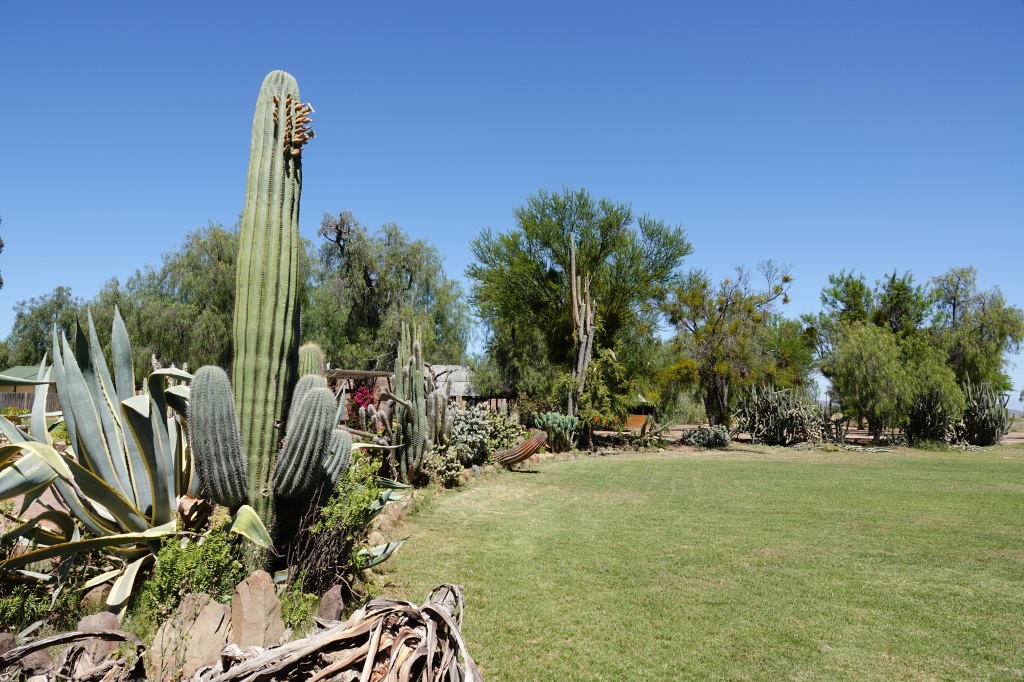
Highgate is a “show farm” which raises chicks for sale to other farms, but does not slaughter its ostriches. So logically enough the first stop on my tour was to see some eggs – these are surprisingly tough, and can withstand a weight of 120kg if it is applied gently. They are though vulnerable to sudden shocks, and are a favourite food for scavenging baboons.
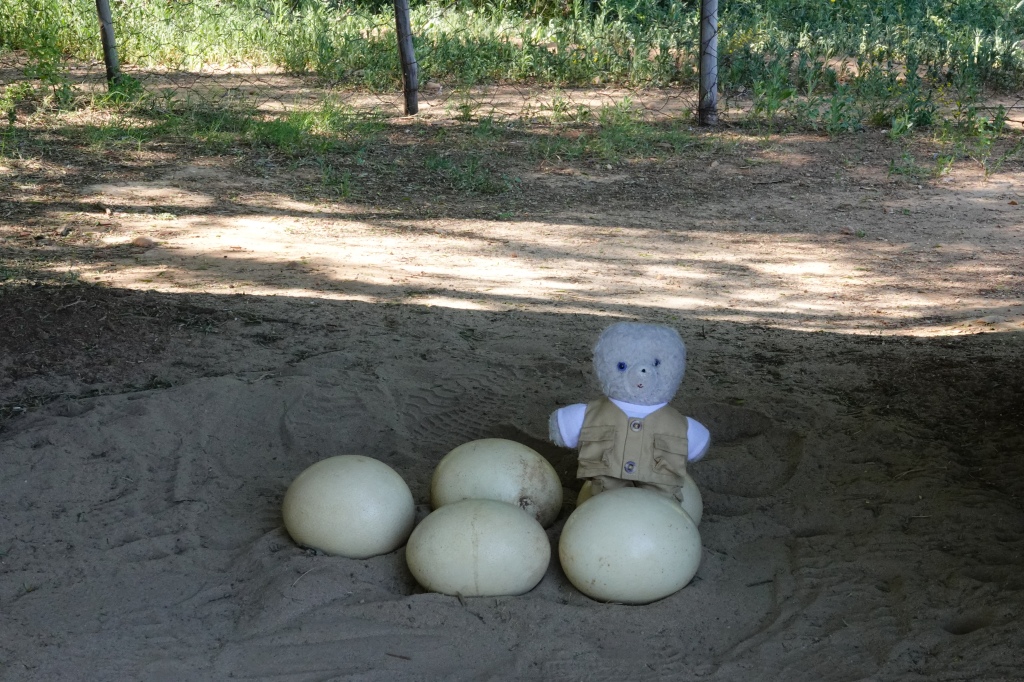
The farm workers remove the eggs from the ostriches’ enclosures. To do this, they arm themselves with a branch from a thorn tree, to keep the birds at bay. Ostriches can be dangerous, being able to deliver a lethal kick, where their sharp toes rip open the stomach of the victim.
The eggs are taken away to be incubated and the chicks are reared until they are old enough to be sold to neighbouring farms. The chicks are rather cuter than the adult birds.

In the early 1900s, ostrich feathers were a very expensive fashion accessory that were hugely popular in Europe. On a per weight basis, feathers were more valuable than gold, and a booming ostrich industry grew up around Oudtshoorn, which became known as the ostrich capital of the world. However, with the outbreak of the first world war, extravagant displays of wealth went out of fashion, and the value of feathers plummeted. Today, ostrich farming continues but mostly for the bird’s meat, which tastes like a leaner version of beef. Its skin is used as leather and its bones as fertiliser – nothing is wasted.
The next part of our tour involved feeding some adult ostriches. Our guide tricked one of our group into turning their back on the hungry birds whilst holding a bucket of grain……..
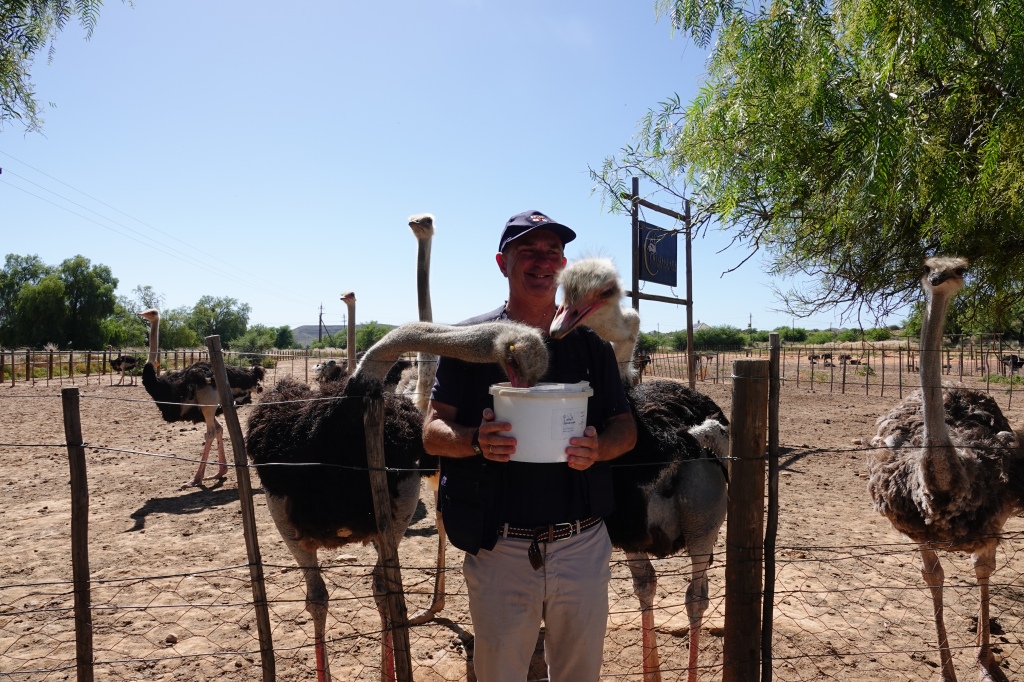
After the ostrich farm, I had to head back west again. If I had had more time I could have continued along South Africa’s famous Garden Route, but it was not to be (this time). At first, my route took me back along the scenic Route 62, which I could now enjoy in the morning light. After an hour, I took a side road leading through an impossibly scenic mountain pass…….


The road eventually joined the main N2 road that runs almost all the way along South Africa’s coast (and is Africa’s longest numbered road). The scenery changed again, becoming flat and greener, with lots of farms. I left the N2 to head south, eventually arriving at the sea near the town of Hermanus. The scenery was again stunning, and quite different to what had gone before. Tall, steep, green mountains plunged almost directly onto to a narrow strip of land with my road and endless beaches of white sand.
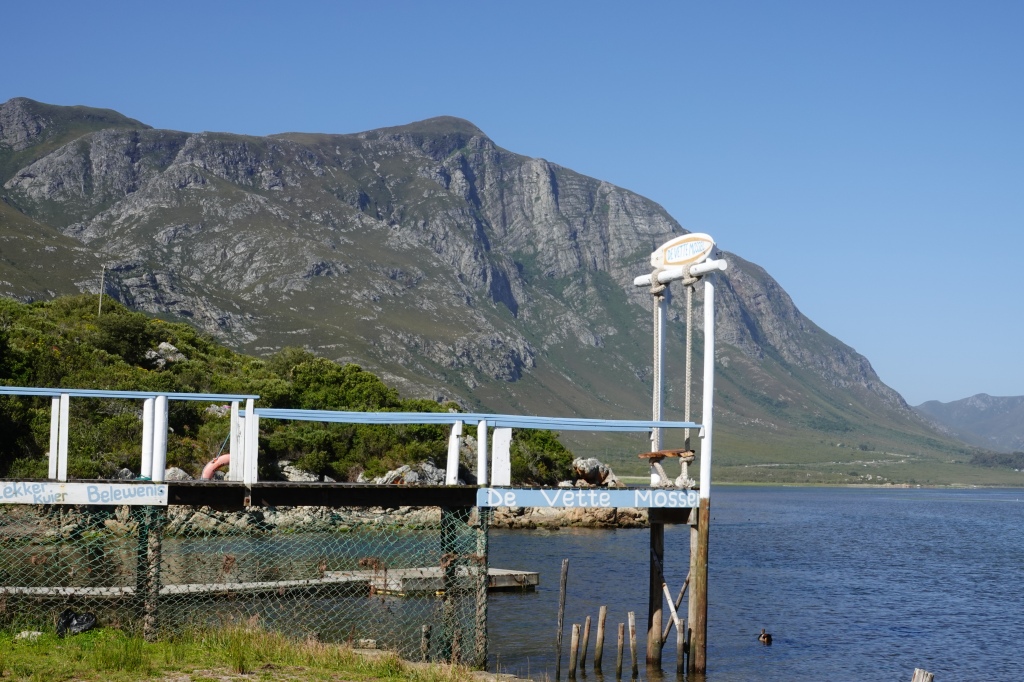
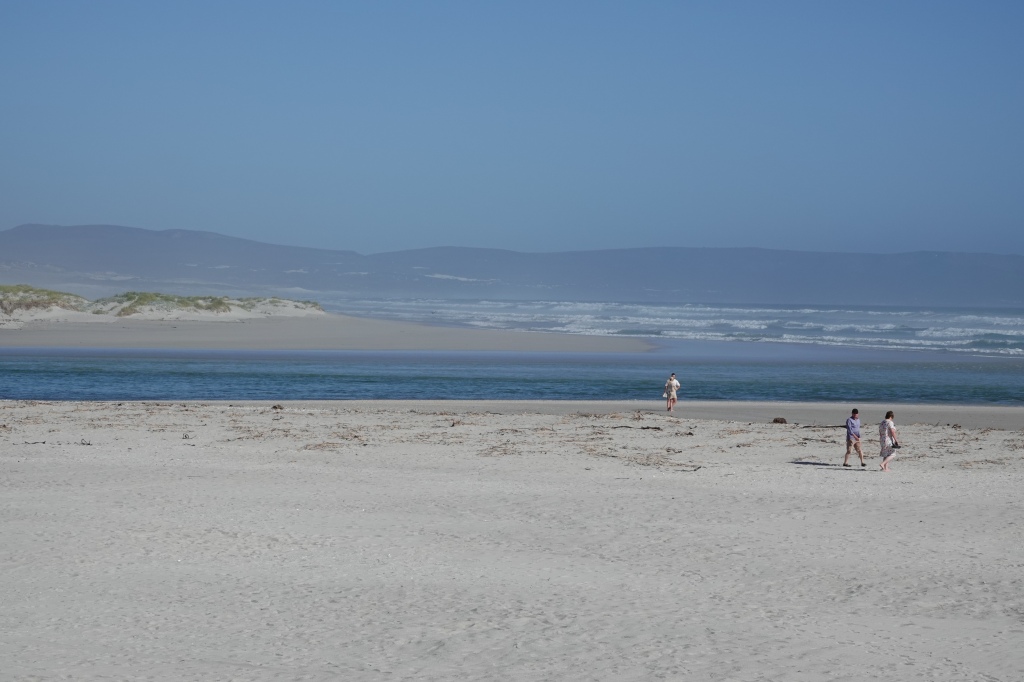
My accommodation was a short way west of Hermanus in an affluent residential area. I couldn’t quite believe how good a place I had booked for only 50€ – it was a large first floor flat with a 180-degree balcony giving views over both the sea and the mountains.
After dropping my luggage, I took a short walk. The area was quiet, with lots of nice houses……all prominently displaying signs that they were protected by security services. I did not meet any other pedestrians until I reached the sea, where a few walkers and joggers cross my path.

I enjoyed the sound of the waves and the changing colours of the landscape as the sun set, before returning to have pizza and wine on my balcony. I am getting to like South Africa…..
Des beaux oeufs pour ta maîtresse! Sympa la fin de la journée au bord de l’eau; tu sais organiser un voyage. Bravo
LikeLike
Later in my trip I was to have a close shave with a wild ostrich…..keep reading
LikeLike